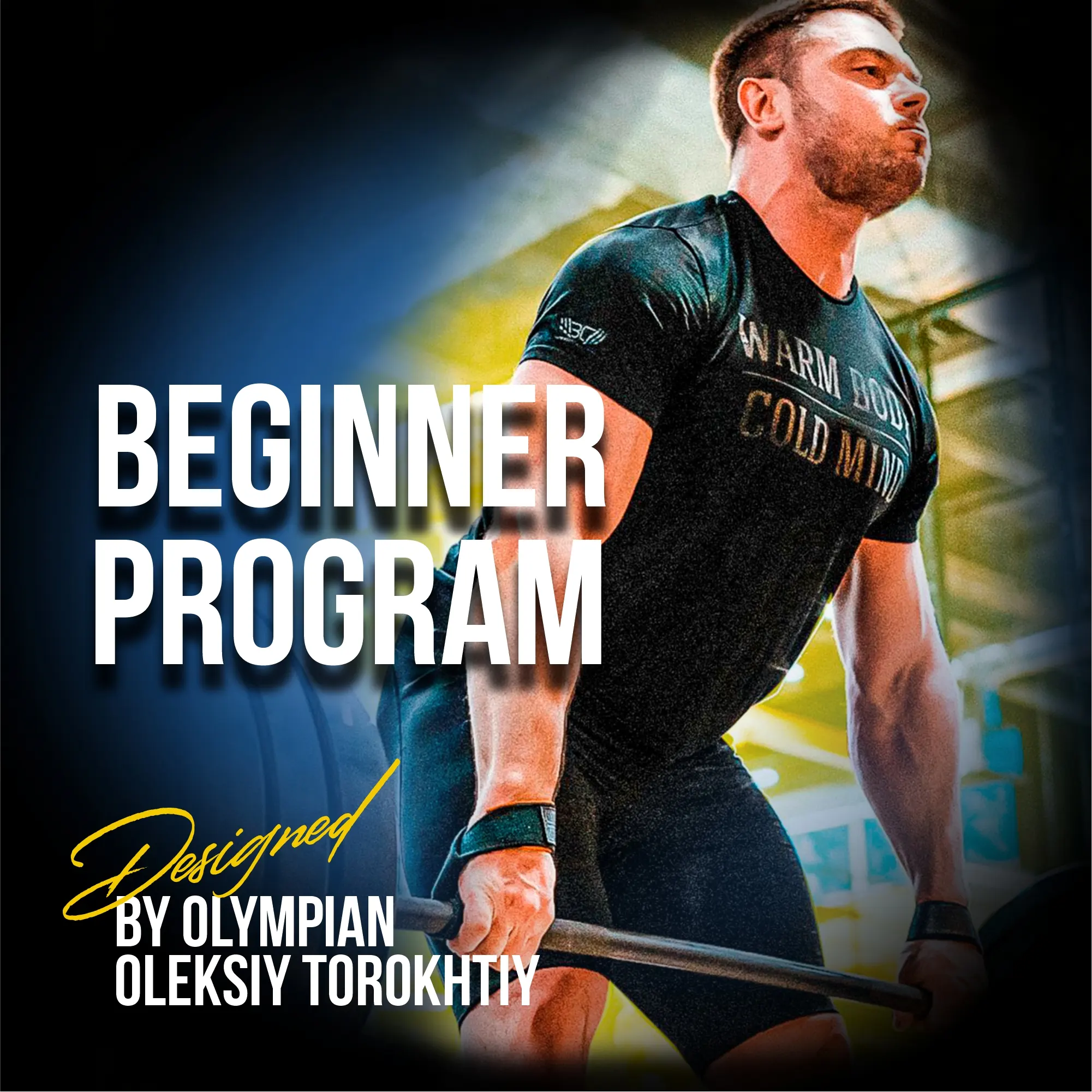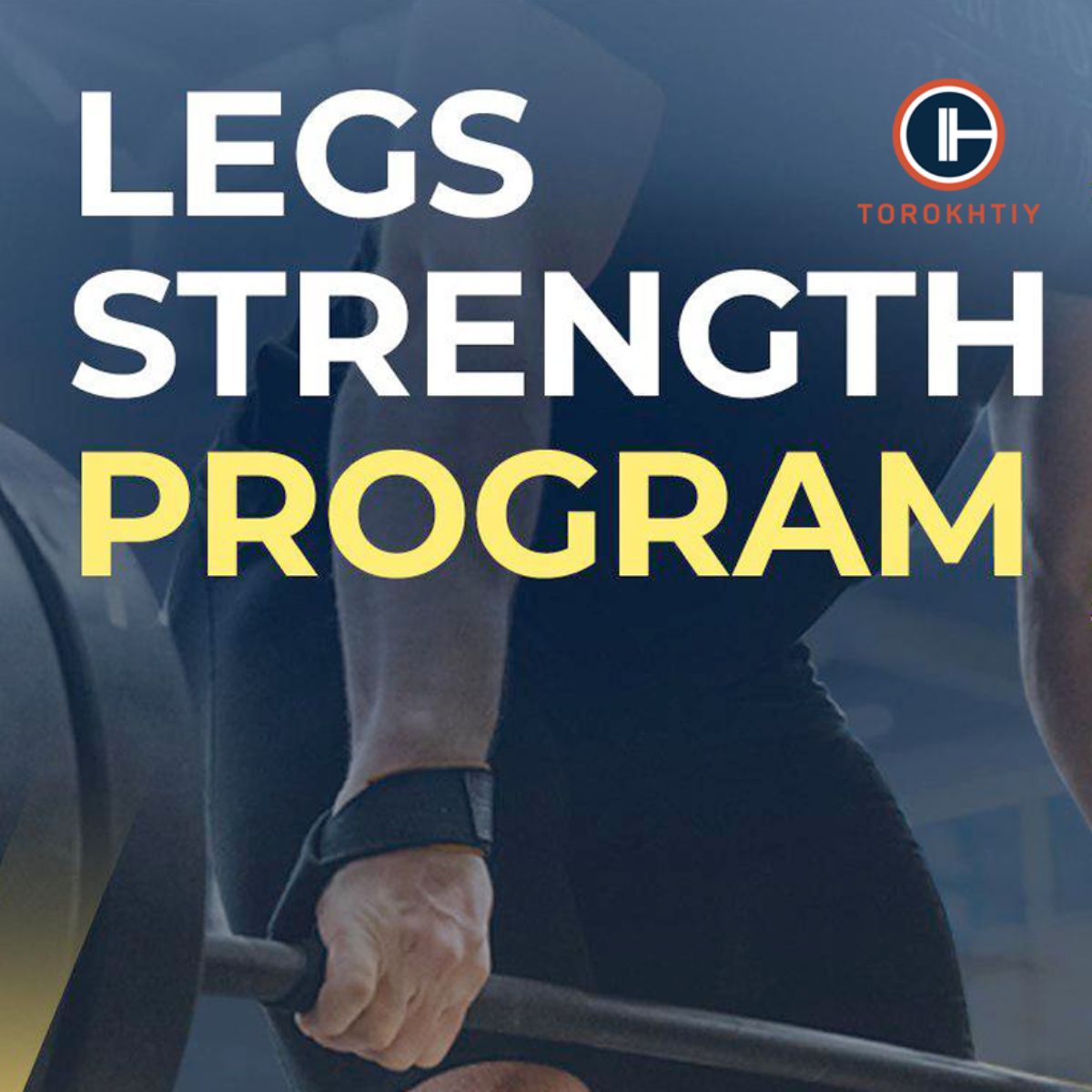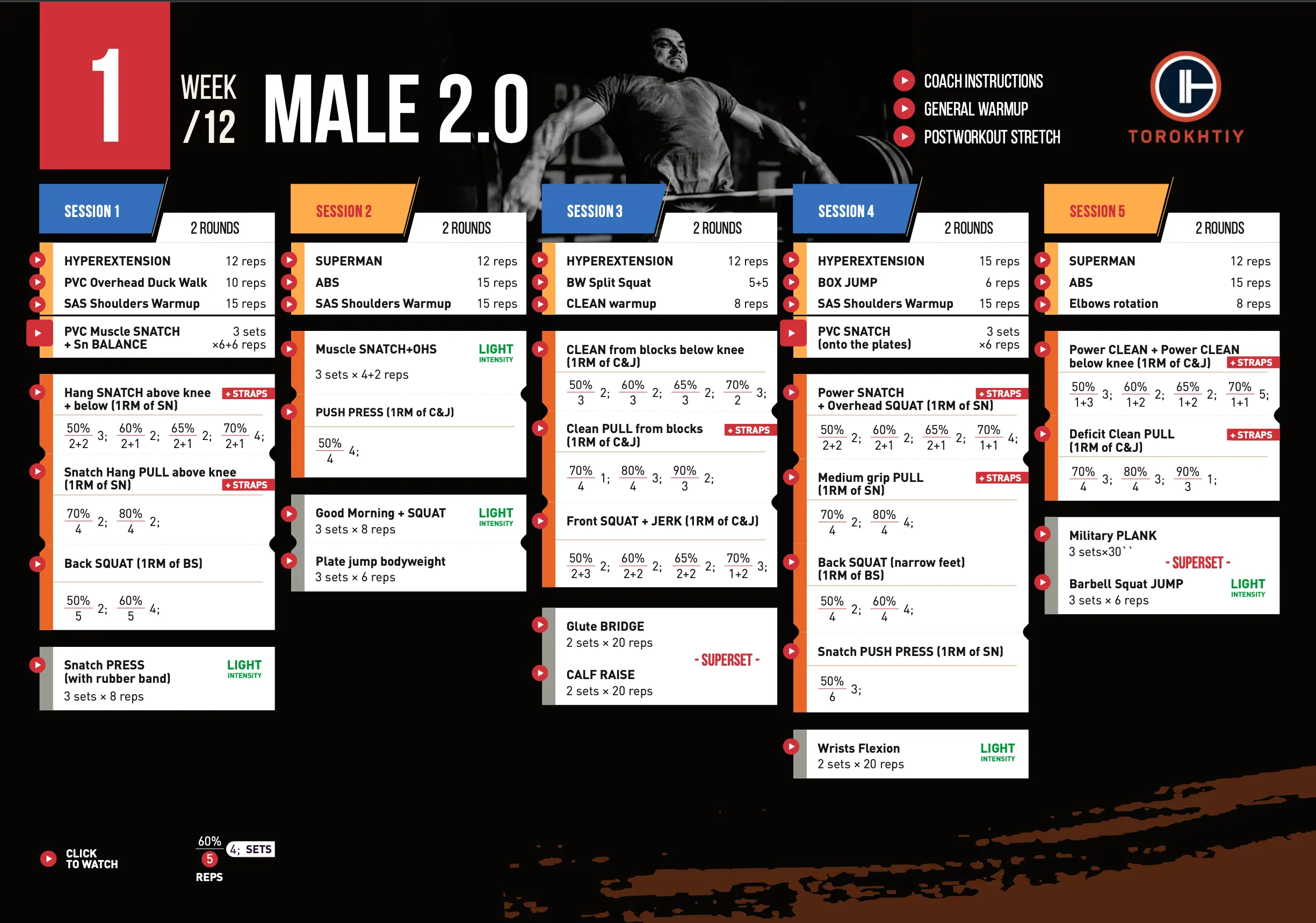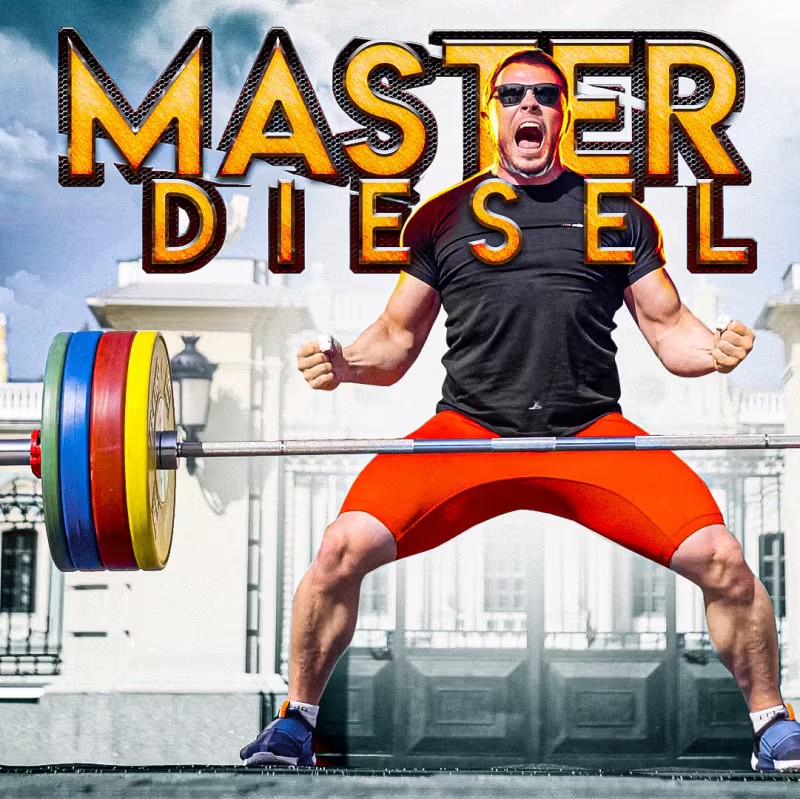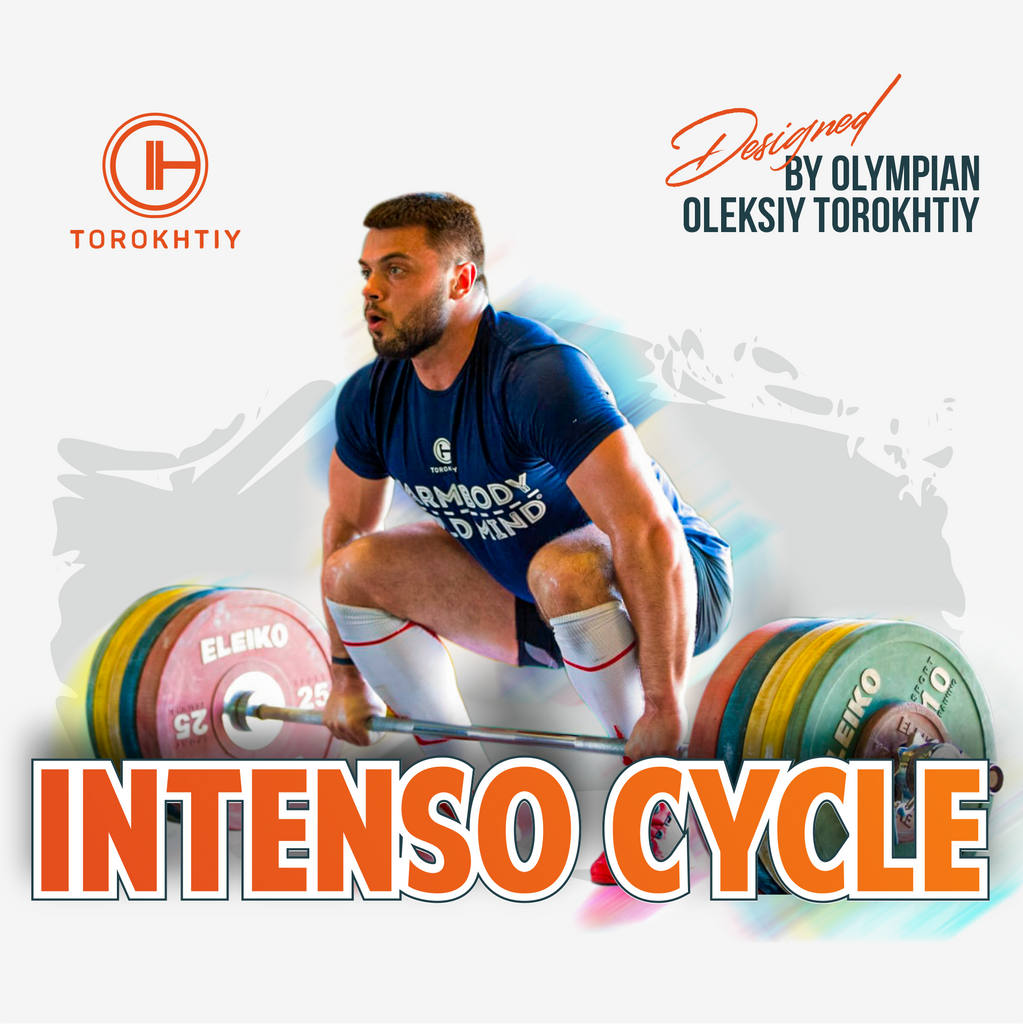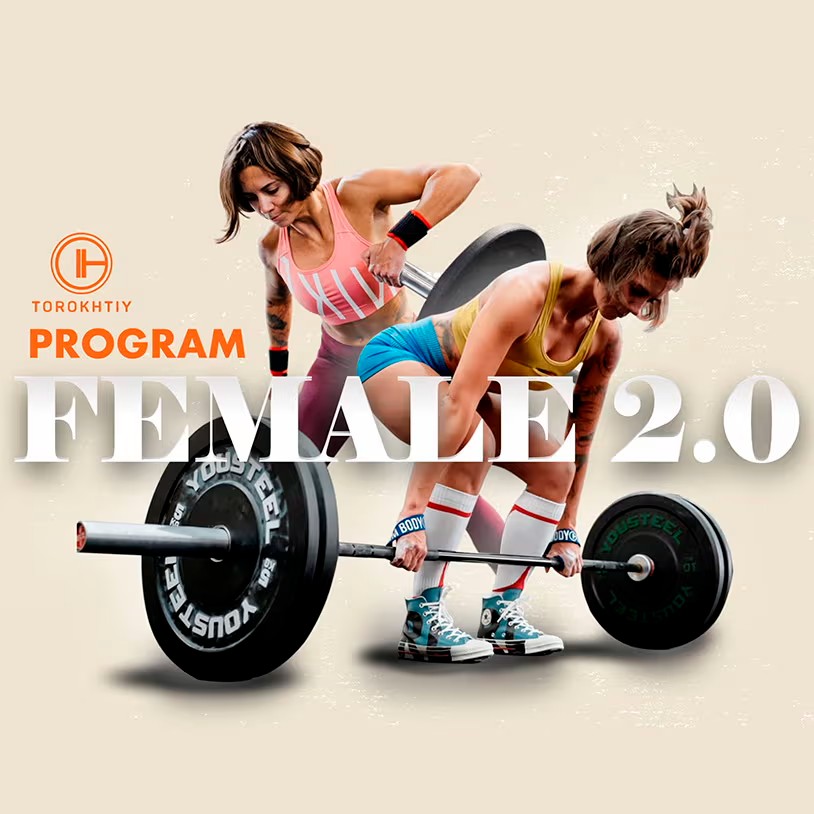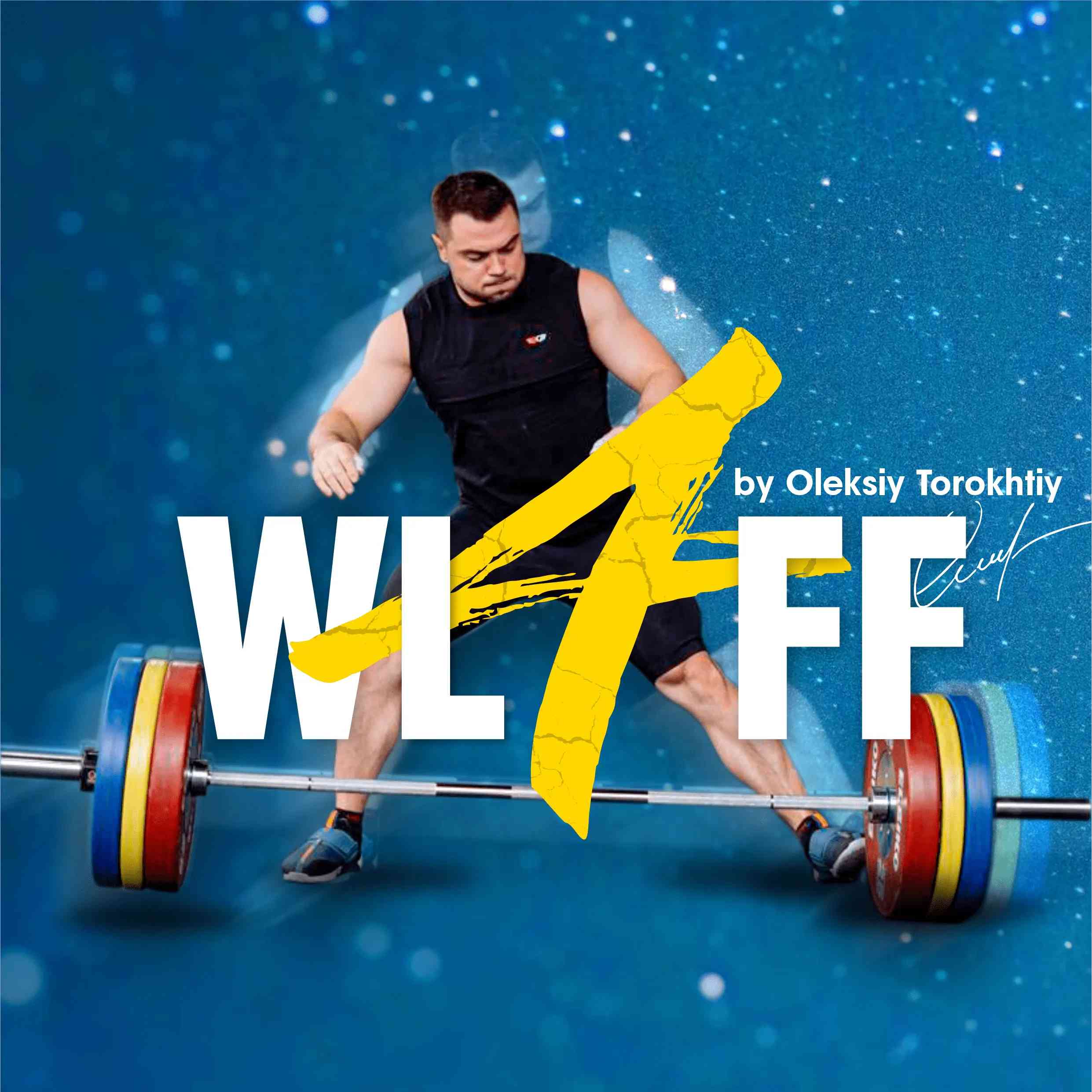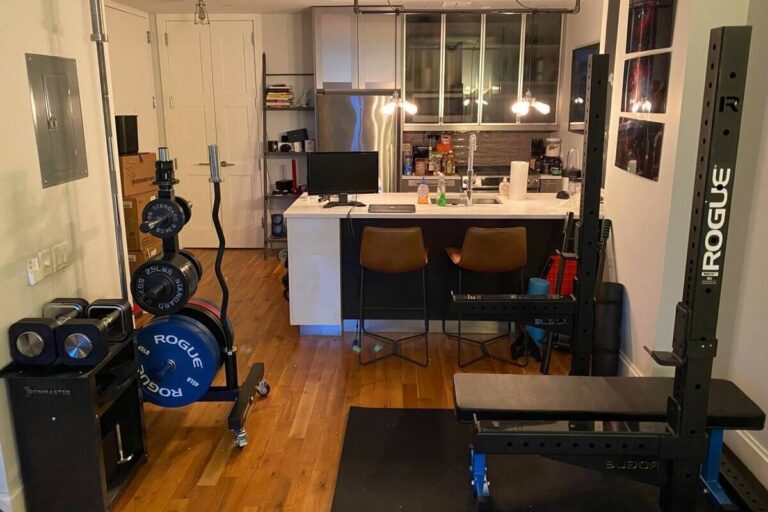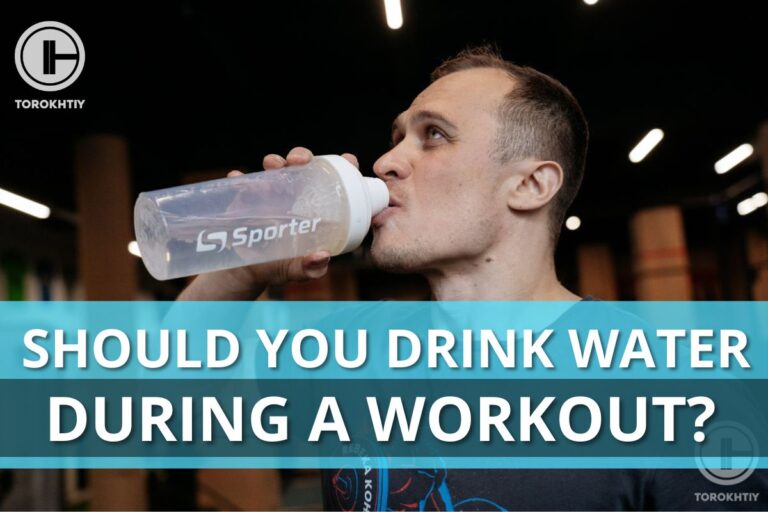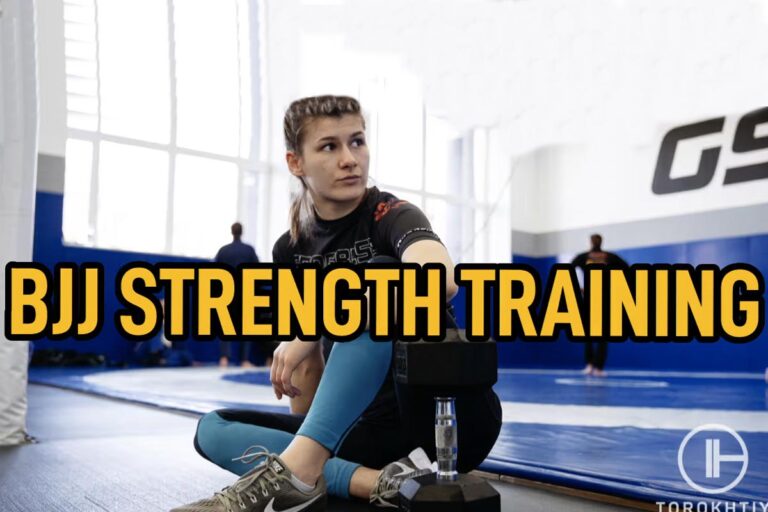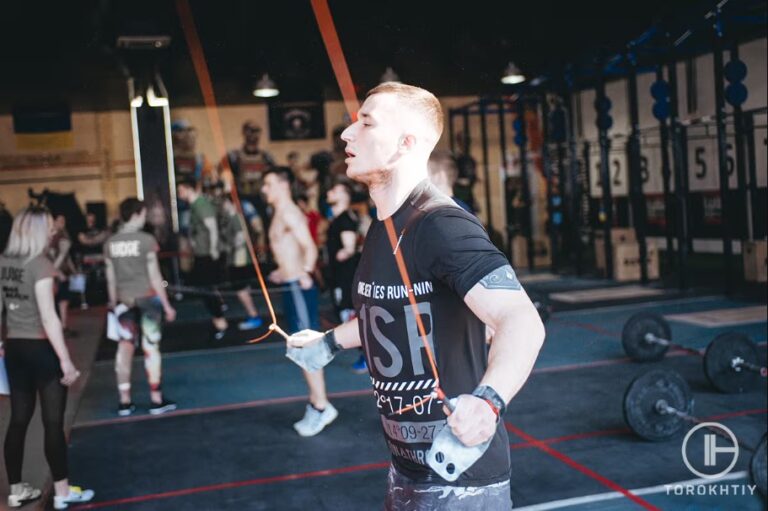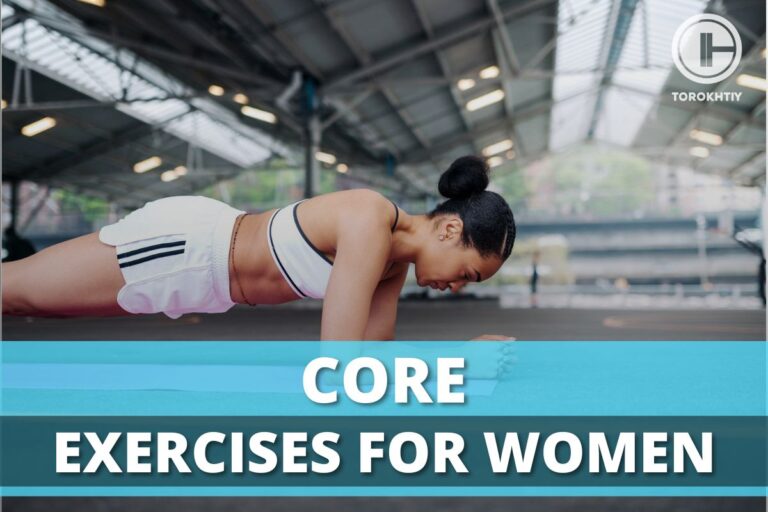Create Your Olympic Weightlifting Program (Examples Included)
Reviewed by: Oleksiy Torokhtiy (21 years of Oly Lifting experience)
Olympic weightlifting is a recognized sport that uses two exercises that call for the lifter to raise a weighted barbell overhead from the platform. Both the snatch and the clean and jerk are explosive exercises because they call for a perfect balance of strength, speed, coordination, and flexibility.
Other sports performance can be improved with these exercises and their modifications. Due to their biomechanical properties of great strength and power output, it is advised that sports requiring high speed force, such as American football, soccer, volleyball, basketball, athletics, and martial arts, adapt features of Olympic weightlifting.
Olympic weightlifting should actually be termed powerlifting since it is a power and speed-based sport as opposed to powerlifting, which is truly a purely strength sport. It is sometimes argued that Olympic weightlifting and powerlifting have been given the wrong names. It’s only a semantics issue, even though this may be the case.

Benefits Of Olympic Weightlifting
1. Physical Fitness
Snatching or clean and jerking is a fun, challenging whole-body exercise that utilizes every muscle in an athlete’s body. In a short period of time, you burn a lot of calories while exercising. Olympic exercises are a terrific approach to maximize the benefits of strength training, develop muscle, and reduce body fat.
2. Become More Powerful, Stronger, And Faster Runner
Some of the largest power outputs are produced during Snatching or clean and jerking in the entire sport. People can run faster and jump higher thanks to power, the byproduct of strength and speed. The best method to increase strength and speed in your workouts is to include Olympic movements.
3. Enhanced Efficiency
Olympic weightlifting workouts are adaptable; depending on how you incorporate them into your routines, they can result in a number of beneficial changes in your body. Olympic exercises can be used to build power, speed, and endurance during high-intensity exercise, as well as to recover more quickly and finish more workouts. Your ability to exert more effort during each workout and achieve your goals more quickly will increase.
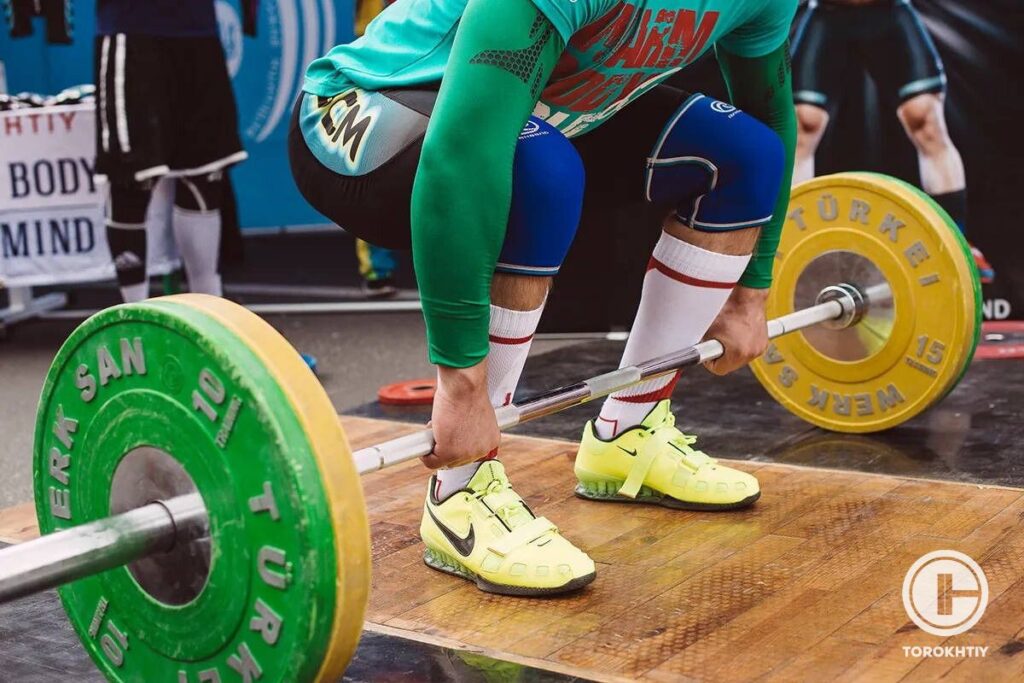
4. Injury Prevention
Olympic lifts are total-body exercises that strengthen and enhance the flexibility of the joints in the shoulders, hips, knees, and ankles. The secret to getting the body ready for the high demands of sports and other daily activities is to learn how to control the tension on all these joints while moving.
5. Increase Bone Density
Strengthening bones is essential for preventing osteoporosis and safeguarding against bone fractures, especially for women. The optimal stress that Olympic exercises place on the arms, legs, and spine is just what the body needs to be stimulated into creating new bone and increasing its density.
6. Enhance Your Coordination
Full-body motions used in Olympic workouts call for exact timing, rhythm, and coordination. Enhancing body awareness and coordination is beneficial for both daily living and athletic performance.
7. Boost Physical Prowess
Olympic lifts demand the athlete to exert force on the ground by a quick and synchronized “triple extension” of the ankle, knee, and hip, simulating the fundamental movements of most sports, sprinting and jumping. Exercises including weightlifting have the second-largest direct impact on enhancing athletic performance in sports where strength, power, and speed are crucial.
8. Develop Your Confidence
Physical improvement affects all aspect of your life. Your confidence in and out of the gym will increase as you pick up new skills and realize what your body is capable of. You will see more benefits if you workout consistently and use strength training as a tool.
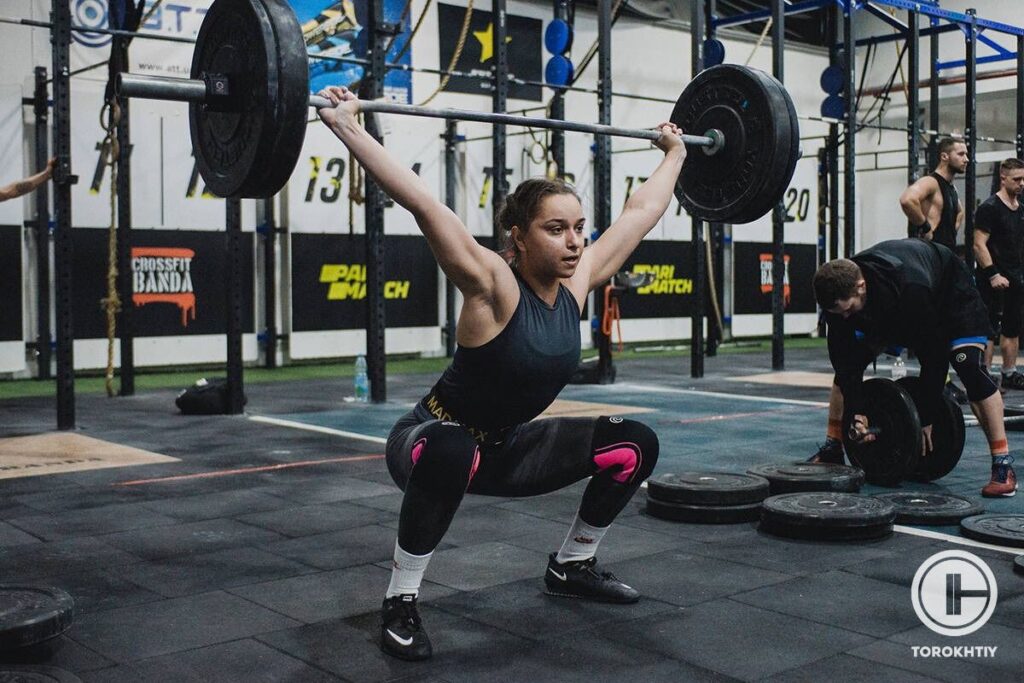
9. Increase Motion Range
While some individuals believe that stiffness and bulkiness come with Olympic lifting, this is untrue. Some of the most adaptable and quick athletes competing in the Olympics are weightlifters.
10. Improve Dynamic Balance
People rarely need strength while standing still in life or in sports, so it’s critical to challenge the body in the gym to reflect this. Olympic weightlifting routine give the body the strength and stability it needs to move quickly throughout the body’s major joints, enabling stability in both daily activities and athletic competition. Exercises like weightlifting are genuinely functional.
What Is Olympic Weightlifting?
1. Snatches
The Snatch, a full-body exercise with the goal of lifting a weight from a seated position to an overhead position in a single motion, can be described as an explosive athletic activity. The Snatch, which uses an Olympic Barbell, is a part of the Olympic program.
There are a lot of variations of Olympic Snatch that mostly are used during training: power snatch, hang snatch, block snatch, deficit snatch and snatch complexes, such as snatch with overhead squat or power snatch with snatch balance.
Briefly the snatch execution can be broken into the following phases:
Starting position: where the lifter takes a position over the bar with a wide grip, feet shoulder-width apart and arched back.
Pull phase: in the first pull, the lifter moves the weight from the ground to the knees, keeping the chest up and back flat; in the second pull, also called as power position, the athlete explosively extends the hips and knees, directing his elbows up to provide vertical bat path.
Turnover: the lifters drop under the bar, catching it overhead on the straight arms into a squat position.
Recovery: lifter stands up from squat position, keeping the bar overhead until the lift is completed.
2. Cleans
The clean is the first part of the clean and jerk, an Olympic weightlifting drill. The athlete raises the barbell to his or her shoulders from the platform. Weightlifters can use it as a training exercise to develop their technique, strength, speed, and all the other attributes required for the lift in order to prepare for competition. It can be utilized by other athletes to improve their power, speed, accuracy, and mobility.
There are a lot of variations of Olympic clean that mostly are used during training: muscle clean, power clean, hang clean, block clean, deficit clean and clean complexes, such as clean with front squat or power clean with hang squat clean.
Briefly the clean execution can be broken into the following phases:
Starting position: where the lifter takes a position over the bar with a clean grip, feet shoulder-width apart and arched back.
Pull phase: in the first pull, the lifter moves the weight from the ground to the knees, keeping the chest up and back flat; in the second first pull, also called as power position, the athlete explosively extends the hips and knees, rotating his elbows up to provide a solid clean catch position.
Turnover: the lifters drop under the bar, catching it into a front rack squat position.
Recovery: lifter stands up from squat position, keeping the bar on his shoulders until the lift is completed or strats to prepare for the jerk.
3. Jerks
The jerk is the second rep of the clean and jerk, which is an Olympic weightlifting move. The athlete cleans the barbell from the floor to the shoulders before he or she raises it overhead. Weightlifters can use it as a training exercise to develop their technique, strength, speed, and all the other attributes required for the lift in order to prepare for competition. It can be utilized by other athletes to improve their power, speed, accuracy, mobility, and overhead strength.
There can be a lot of types of Olympic jerk that mostly are used during training: push jerk, push press, paused jerk, jerk behind the neck and jerk complexes, such as front squat + jerk, push press + jerk.
Incorporating these variations into the training process can help lifters develop the specific parts required to execute the lift successfully and prepare for the competition.
Jerk can be broken down into three main phases – dip, drive, catch.
Before a lifter initiates a dip, it is important to set or take the correct initial positions.
Starting position (also known as front rack position): the initial position for the jerk begins with the athlete standing upright, feet hip-width apart or a bit wider, with the bar resting on the shoulders. The grip is at least a bit wider than shoulders, elbows pointing forward and slightly out, big chest up and core tight.
Dip: during this phase the athlete bends his knees slightly (it is ok to push knees a bit out in the same plane with toes), keeping the torso upright. Usually depth is around ⅓ of full squat. The goal of this movement is to engage leg muscles.
Drive: in this phase the athlete explosively extends the hips and knees, sending the heavy bar upward. It is important to maintain vertical direction to create the correct bar path.
Catch: the athlete quickly splits legs forward and backward or just bends knees to drop under the bar, catching the weight in a fully extended overhead position before recovering to a full straight standing position.
4. Squats
The barbell squat is a fundamental exercise for Olympic weightlifters of all levels and it is essential for developing lower body strength, stability and mobility.
When performing a barbell squat, the athlete lowers their hips from a standing posture before standing back up. In a squat, the hip and knee joints flex while the ankle joint; in contrast, when standing up, the hip and knee joints extend.
There are a lot of variations and styles of barbell squats in Olympic weightlifting training programs, such as back squats, front squats, paused squats, split squats. It also can be a variation of squats with a different feet stance: narrow, wide and middle.
These styles and variations of squats are incorporated into training programs with different goals. Because they target different muscle groups and aspects of the squat movement.
For example, the front squats emphasizes the quads and upper back, while back squats places way more emphasis on the lower back. Paused squats, where the athlete holds the bottom position for a brief period (3-10 sec), can help improve stability and strength in the bottom position of the squat. Split squats help to address any imbalances between the legs.
Adjusting the feet stance, whether narrow, wide or middle can also target different muscle groups and help improve mobility in the hips, knees and ankles. Incorporating various squat variations and stances into training programs can help athletes develop well-rounded strength, power and mobility required of Olympic weightlifting and other sports.
5. Pulls
In the pulls, weightlifters lower themselves to the floor and lift a heavy barbell off the ground by hinging hips backward. All throughout the movement, back must be flat. The upper and lower back, glutes, and hamstrings can all be strengthened and given more definition with deadlift exercises.
There are a lot of pull variations in Olympic weightlifting training programs, such as snatch grip pull, clean grip pull, middle grip pull. It also can be a variation of pull with a different initial position: hang pull, block pull, deficit pull, paused pull, eccentric pull, high pull, and pull complexes: snatch pull + snatch, clean pull + clean.
These variations target different muscle groups and aspects of the pull movement. For example, snatch pull, with wider grip places more emphasis on the upper back, lats and traps, while the clean grip pull, with a narrower grip, focuses more on lower back and hips.
Incorporating pull variations and complexes into training programs can help lifters develop well-rounded strength, power and technique for Olympic athletes and other sports.
Important Accessory Exercises For Olympic Lifting
Accessory exercises are fundamental for enhancing strength stability and mobility in specific regions that are vital for Olympic weightlifting.
These exercises help to address weaknesses in the body that may not be directly targeted to the main Olympic lifts, but crucial for overall clinical performance and injury prevention. Here are essential accessory exercises for Olympic weightlifting:
1. Romanian Deadlift
This drill targets the hamstrings glutes and lower back, thereby improving the hip hinge movement and strengthening the posterior chain. This exercise is crucial for enhancing the initial pull of both the snatch and clean and jerk and also helps in improving overall stability and control during the lifts.
To execute it stand with feet hip-width apart, holding a barbell in front of your thighs with a slight bend in your knees then hinge at your hips to lower the way down in the front of your legs keeping your back flap and chest up, before driving your hips forward to return to the starting position.
2. Overhead Squats
This exercise helps develop stability and mobility in the overhead position which is crucial for the snatch. It also engages the core shoulders and hips, promoting overall balance and coordination.
Overhead squats are essential for improving the receiving position of the snatch and enhance an overall flexibility and range of motion. Start by standing with your feet shoulder-width apart and a bar pressed overhead with arms fully extended in the snatch grip and then perform a regular squat, by pushing your hips back and bending your knees to lower your body towards the ground, while keeping the weight stable overhead, when pushed back up to the starting position.
3. Bent Over Rows
This exercise targets the upper back lats and rhomboids, helping to maintain a strong back position during the lifts. It also helps in developing grip strength and shoulder stability. Bent over rows are crucial for enhancing the pool in the snatch and clean and jerk and also help in preventing injury by promoting overall back health.
To execute it, stand with your feet hip with a part and the slide bend in your knees. Hinge at the hips to lead your torso forward, while keeping your back flat. Hold the barbell with both hands, using an overhand grip, then pull the barbell towards your abdomen, while squeezing your shoulder blades together and then lower back to the starting position.
4. Bulgarian Split Squats
This exercise is crucial for improving single leg strength stability and hip mobility. It targets the quads, hamstrings and glutes and helps in correcting muscle imbalances between the legs, which is essential for maintaining proper alignment during the lifts.
To execute it stand a few feet away from a bench or elevated surface with barbel resting on your upper back, then place one foot behind you on the bench and lower your body by bending your front knee until your thigh is parallel to the ground, then push back up to the starting position for prescribed number of reps and repeat on the other leg.
5. Good Mornings
This exercise targets the lower back hamstring and glutes, improving the hip hinge movement and strengthening the posterior chain. It also helps in developing spinal erectors strength which is essential for maintaining a neutral spine during the lifts.
Good mornings are crucial for enhancing the initial pool phase of snatch and clean and also help in preventing injuries by promoting overall back and hip health. To execute it stand with your feet shoulder width apart and the bar resting on your upper back.
Then hinge at your hips to lean your torso forward while keeping your back flab and knees slightly bent. Lower your torso until it is almost parallel to the ground, then reverse the motion by driving your hips forward to return to starting position.
6. Push Press
This exercise helps to develop shoulder and overhead strength as well as leg drive which is essential for the jerk. It targets the shoulders triceps and legs and helps in improving the overhead position and the driving phase of jerk.
To execute it stand by with your feet shoulder width apart and the barbel resting in front rack position. Then initiate the movement by slightly bending your knees and explosively extending your legs, while simultaneously pressing the barbell overhead until your arms are fully extended. Then lower the barbell back onto your shoulders.
7. Hanging Leg Raises
This exercise strengthens the core and hip flexors which are crucial for maintaining a strong core during the lifts, it also helps in developing overall hip mobility. To execute it hang from a pull up bar with your hands width shoulder apart and your legs fully extended.
Then, keeping your legs straight or slightly bent, lift them up towards your chest, engaging your abdominal muscles, then lower them back down to the starting position in a controlled manner.
8. Box Jump
Box jumps are plyometric exercises that target the leg muscles particularly the quads, hamstrings and glutes and also engage the core. To execute a box jump start by standing in front of the box or platform with your feet hip width apart.
Begin the movement by doing a half squat, then explosively jump onto the box. Land softly with your knees slightly bent, stand up straight, then step back or jump down and repeat.
9. Plank Variations
The plank is a core stabilization exercise that targets the abdominal muscles lower back shoulders. To execute a plank start by lying face down on the floor then place your body up onto your forearms and toes, keeping your body in a straight line from head to heels.
Engage core and glutes to prevent your hips from sagging or lifting too high, holding this position for a designated amount of time, keeping your breathing steady and your body as still as possible.
10. Farmers Walk
The farmers walk is a functional strength exercise that targets the entire body with a focus on the grip, forearms, shoulders, core and lower back. It’s beneficial for Olympic weightlifters as it improves grip strength. shoulder stability and core strength.
To execute a farmers walk, start by standing upright, holding heavy dumbbells or kettlebell in each hand with a neutral grip. Engage your core, stand tall and start walking at a steady pace. Keep your chest up and shoulders tight. Walk for the distance or time, then carefully put the weight down and rest.
11. Wrist Curls
The wrist curls is an isolation exercise that specifically targets the forearm muscles. It is especially beneficial for Olympic weightlifters, because a strong grip and forearm strength are crucial for lifts like snatch and clean and jerk.
To execute wrist curls sit on a bench with your forearms resting on your thighs holding the bar with an underhand grip (palms facing up). Allow the bar to roll down your fingers and then curl your arms up towards your body squeezing your forearms at the top of the movement. Lower the weight back down and repeat for the desired number of reps.
Goals Of An Olympic Weightlifting Program
1. Basic Fitness
Long-term development and injury prevention depend on establishing a base level of fitness. The olympic weightlifting program can be made more varied and the athletes’ health can be enhanced by beginning and ending each workout with a few simple plyometric, strength, and corrective aid exercises.
2. Mobility And Flexibility
The aim is to find solutions to any mobility and flexibility issues. In some positions, many athletes may lack basic control and flexibility, but the majority can actually enhance mobility by just following a structured training regimen.
3. Technique
The desire to lift weights well over their technical capacity is common among athletes. Technique development is usually top priority since skill development is essential.
4. Hypertrophy Of The Muscle
More muscle tissue must be developed during the course of a weightlifter’s sporting career in order to accumulate the reserve required to grow more powerful and strong. Many athletes won’t be able to increase their strength and performance over the long run without effective muscle hypertrophy training.
5. Neural Adaptation
Weightlifting is a very neurologically demanding sport in which the athlete must become accustomed to high levels of motor control while moving quickly under large loads. Throughout a weightlifting career, the lifter must improve their neural connections and impulses due to the need for speed, power, and extremely accurate movement.
6. Build A Broad Skill Set
Giving the athlete adequate exercises will help them develop their movement patterns, coordination, and comprehension of the lifts without overwhelming them with too many possibilities. Increasing the number of training days will help with this.
7. Improve Performance
Cardiovascular and muscular endurance are referred to as performance. The capacity to workout with a heavier load and more frequently without sacrificing performance or being overly worn out.
You can raise their baseline fitness so they can take part in and advance in more severe training cycles by increasing training volume, cutting down on rest intervals, and introducing supportive activities.
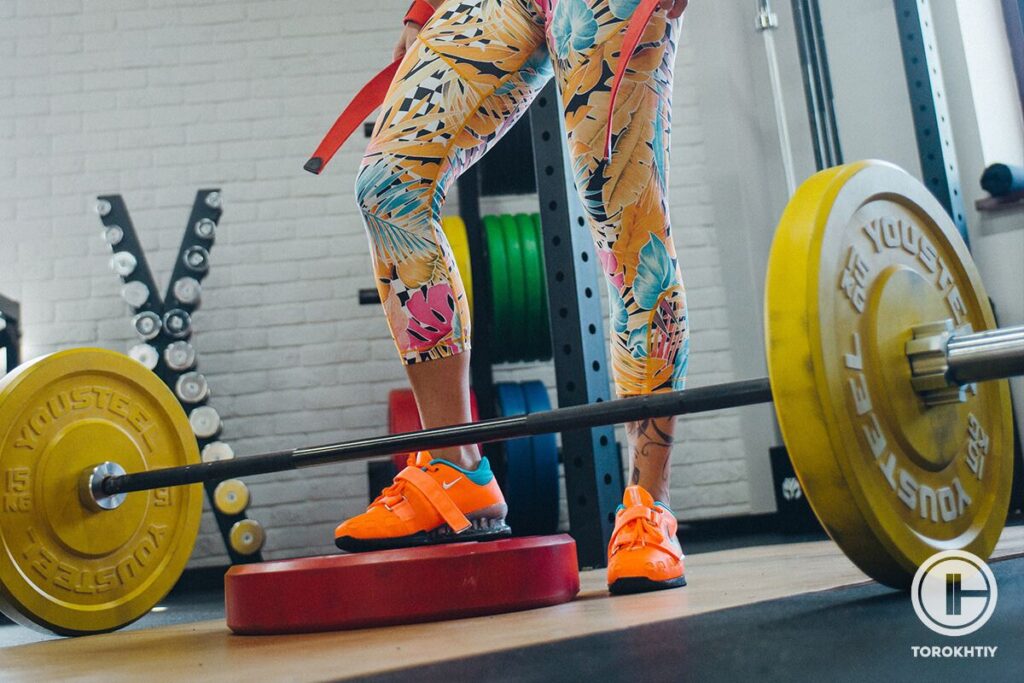
Programming For Beginners Vs Intermediate And Advanced Lifters
This is a question that is commonly posed. In actuality, if you frequently find yourself needing to clarify a workout, you probably need a starting weightlifting program and are a beginner weightlifter.
No matter how long you’ve been there, it doesn’t matter. You are a beginner if you haven’t gained a lot of muscle mass, aren’t very strong, and can’t technically perform a Snatch, Clean & Jerk , pull, or squat. Remember that this is a fair and honest evaluation meant to assist you in selecting the best workout, not an insult.
You can choose your lift level by using the explanation listed below.
1. Beginner
There are few types of beginners.
Newbie have poor workout technique and have no concept of what the majority of exercises entail. Even in the most basic drills, they lack steadiness. The novice has typically never increased their strength or muscle mass and has no idea how to properly train and diet.
Beginning weightlifter works on technique and practices for at least a few months. He already has a good understanding of his personal weight limit. However, this does not imply that he will be aware of his limit. In any exercise, novices shouldn’t push themselves above their limits. You can stay in this condition forever. No matter how long you’ve been training, if your efforts aren’t yielding results, it doesn’t matter.
Experienced Beginner Weightlifter is pretty secure in his technique since he has taken the time to practice and master the correct technique for the fundamental snatch and clean & jerk exercises. But at this stage they definitely don’t need 5 day olympic weightlifting program, 3 days per week will be totally enough.
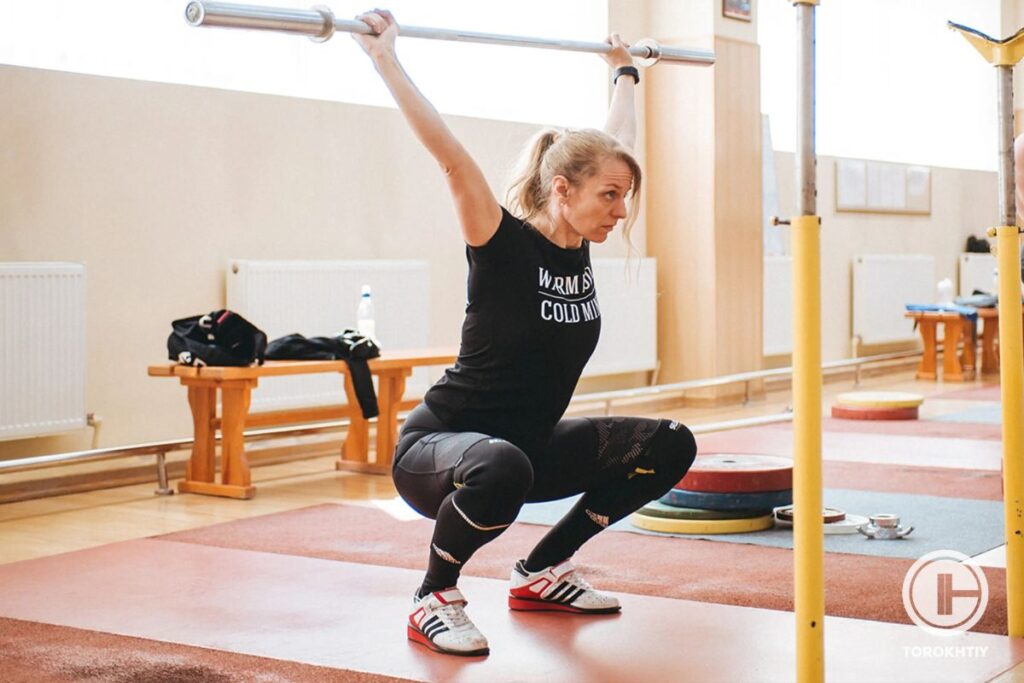
2. Intermediate Lifter
In the snatch and clean and jerk, an intermediate weightlifter has reached 85–90% of his maximum strength and technique. He will perform well in local weightlifting tournaments if he trains for results. A intermediate weightlifting program can consist of 4-5 sessions times per week with enough volume.
With their programming, they need structure in the form of periodization, unloading, or fatigue management. An intermediate weightlifter is aware of his primary areas of weakness and is comfortable creating his own routines and modifying them.
He seeks assistance from more experienced athletes and coaches when he needs advice or help in program design. Despite the challenges in his way, he manages to achieve.
3. Advanced
A very small percentage of athletes progress to the advanced and elite level. Elite athletes have encountered highly challenging obstacles during their athletic and training careers and have learned to overcome them via trial and error.
They have a strong understanding of their physical capabilities and mental stability and advanced weightlifting program as well. These weightlifters are close to their genetic make-up or at or near the elite level in Olympic weightlifting. Most of the time, these weightlifters are among the best in their nation, and many of them have competed abroad.
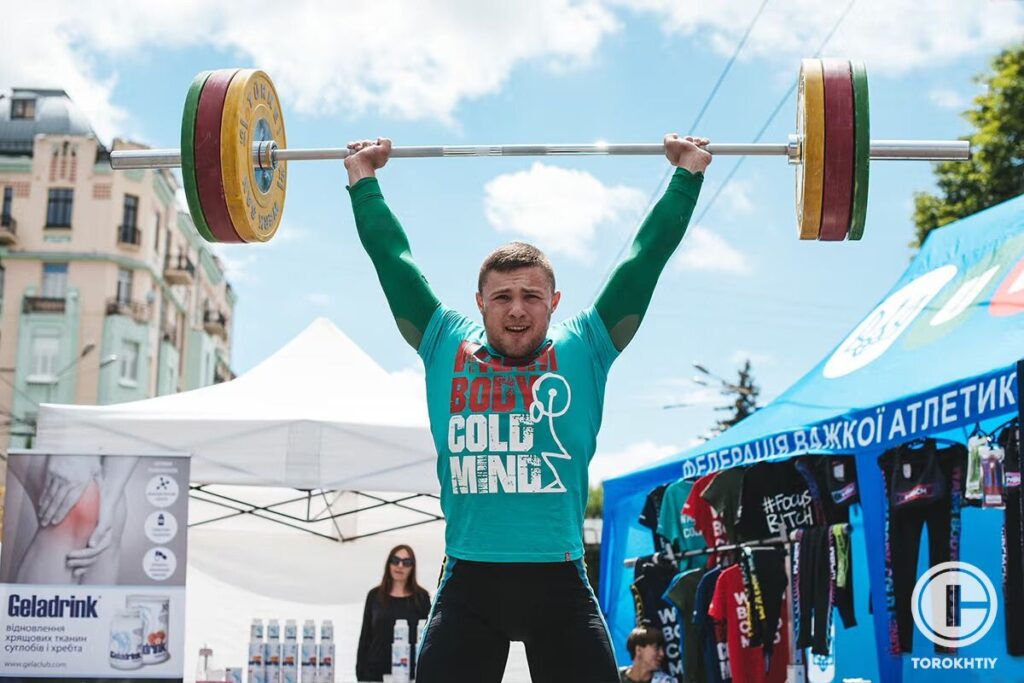
Key Factors In Weightlifting Routine
Each exercise in a training program has a matching load. Sports science as a whole investigates how patterns of fitness change based on the sport, the athlete’s gender, and their level (juniors, senior, masters).
A training program is created by the coach or athlete based on the objectives, timeframe, and individual and team qualities. The workout frequency, exercises order, volume and intensity of training work are significant load metrics.
1. Frequency
Frequency is the number of workouts per week. While top athletes often do 8-10 workouts a week (often several sessions a day), most beginners don’t need such extreme loads. The program with 3-5 workouts per week, allows to develop technique, gain strength and muscle mass, as well as adequately recover. On active recovery days or rest days, you can split up enough sleep, stretching, and nutrition, which are important.
2. Intensity
An indicator of the quality is the level of intensity. The average weight used in the attempt, in training, relative intensity, as well as the distribution of lifts by intensity zones, are all indicators of intensity in weightlifting.
By dividing the total volume by the number of repetitions, the average weight is calculated.
For instance, the average weight will be 83 kg if the total volume is 580 kg and there are 7 repetitions.
83 kg x 7 repetitions = 580 kg
By dividing the average weight by the exercise’s best performance, then multiplying the result by 100%, one can calculate relative intensity.
Example: The best performance in the exercise was 120 kg, and the relative intensity was 69%. The average weight in the exercise was 83 kg.
83 kg / 120 kg x 100% = 69%
In modern weightlifting, intensity zones are a crucial signal that allow for an objective, visible evaluation of the level of effort expended. The six intensity zones that are most frequently employed are 50–60%, 61–70%, 71–80%, 81–90%, 91–100%, and over 100%.
All lifts in exercise groups are distributed by zones when calculating the load for a workout, a week, or a month, making it easy to assess and analyze the athlete’s work objectively.
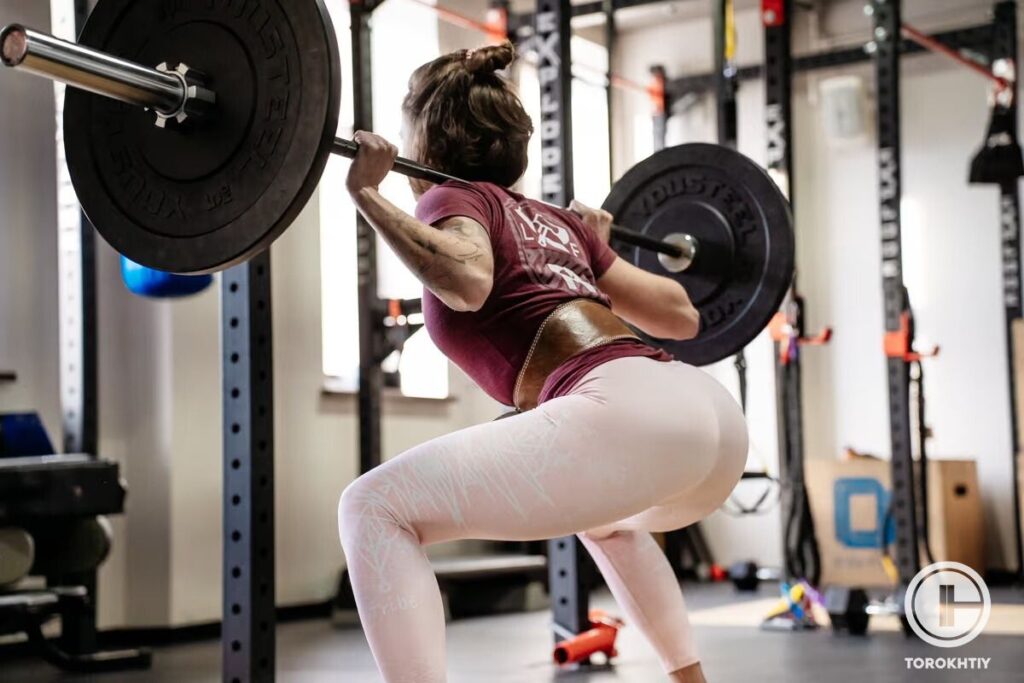
3. Volume
The volume is the quantity of work an athlete completes in a specific time frame (one set, training session, week, month, etc.). Volume can be calculated in weightlifting using the number of training days, sessions, kilos, and hours. The number of repetitions and kilograms, however, are the most accurate and widely used format for calculating volume today.
It is required to total up all repetitions with working weights in order to calculate volume indicators, such as the number of lifts in the exercise. Most athletes base their working repetitions at 50%, while some elite athletes base their load at 70%;
The total volume (number of kilos), the working weight needs to be multiplied by the quantity of repetitions and sets.
Example: If an athlete performed an exercise in which they lifted 40 kg 3/4, 55 kg 2/3, and 65 kg 2/2, the quantity of labor in kilograms, or the weight lifted, will be computed as follows: 40x4x3 + 55x2x3 + 65x2x2 = 1070 kg.
The number of repetitions in a distinct exercise are divided by the total number of repetitions and multiplied by 100% to determine the exercise’s percentage of the total amount of labor.
For instance, if an exercise required 80 repetitions and the overall number of repetitions was 290, the exercise’s share would be 27.6%.
4. Exercise Order
First off all, athletes engage in explosive, speed, and competitive exercises during training to use their muscles as effectively as possible.
You can then plan in session auxiliary and strength drills. As peak power production is crucial, this will aid in ensuring optimal form, technique, and neurological function.
In some stages of competition preparation, more experienced weightlifters may, however, practice squats and other heavy exercises before the Olympic exercises, which aid the nerves in improving the stimulation of individual motor units.
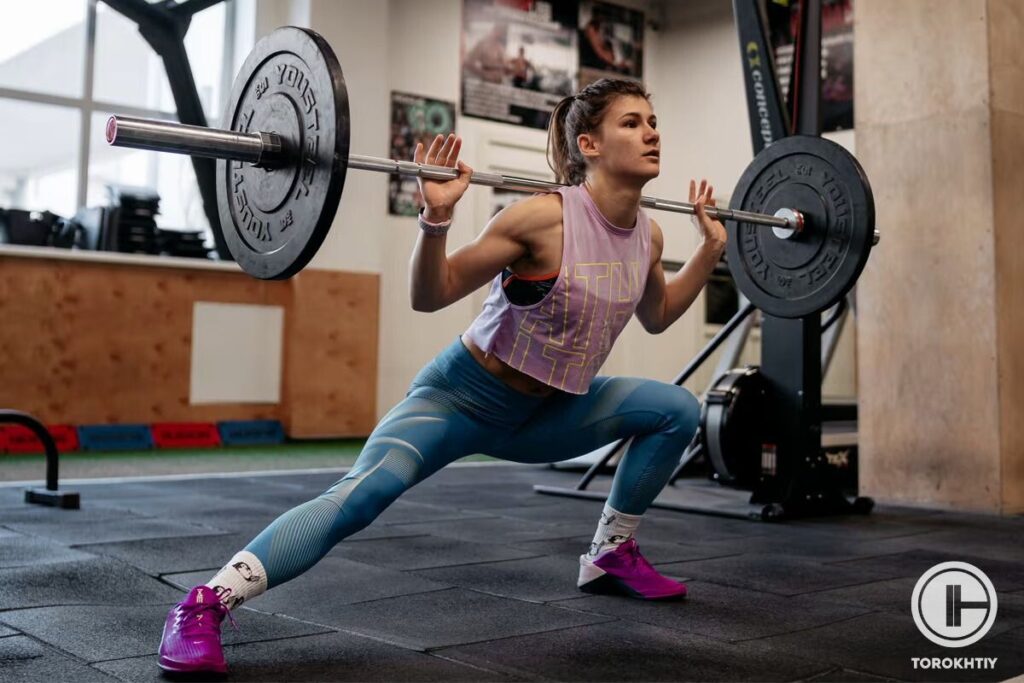
Common Weightlifting Programming Mistakes
Result in weightlifting takes time, dedication, consistency and tons of effort. However, if you don’t know how to plan an effective workout, you can make mistakes that will cause injury, or slow down your overall progress. Let’s take a look at some of the most common weightlifting mistakes made by beginners and even experienced weightlifters alike.
1. The Pursuit Of Results
Everyone who dreams of lifting big pounds tries to do it faster. For each, these “big kilograms” are different, but you need to remember and understand that every human has its genetics, as well as a host of other related factors that will help or prevent us from lifting that same heavy barbell. You must keep in mind that there cannot be “large kilograms” at once, by definition – power and technique require patience to form.
My coach used the term “beginner” for athletes who have been involved in weightlifting up to two years, just enough to master the technique of movement and prepare the body for real weightlifting, which will bring pleasure and results, and not injury or disappointment.
Unfortunately, it is in different gyms that one can often see attempts to cheat time and move up the barbell contrary to the laws of physiology and training methodology, in the absence of a technical and power base.
2. No Warm Up
Do you warm up before your workout? If not, you are making a big mistake. Many people don’t realize that not warming up before weightlifting can lead to serious injury. It is well known that it is warm-up exercises that allow you to fully engage in work.
They don’t have to be intense or difficult, just enough to get your blood pumping and muscle memory kicking in. It would seem that a simple and understandable rule for absolutely everyone is to warm up before training. This is exactly what coaches teach beginners.
At the same time, many athletes do not know that before picking up the barbell, it is necessary to conduct a general warm-up around 10-12 minutes. And this is of great importance for preparing the body for the upcoming main work, which is associated with heavy loads on the musculoskeletal system.
It must be remembered that in the process of warming up in the joints, mobility increases, coordination of fibers is established, metabolism is accelerated.
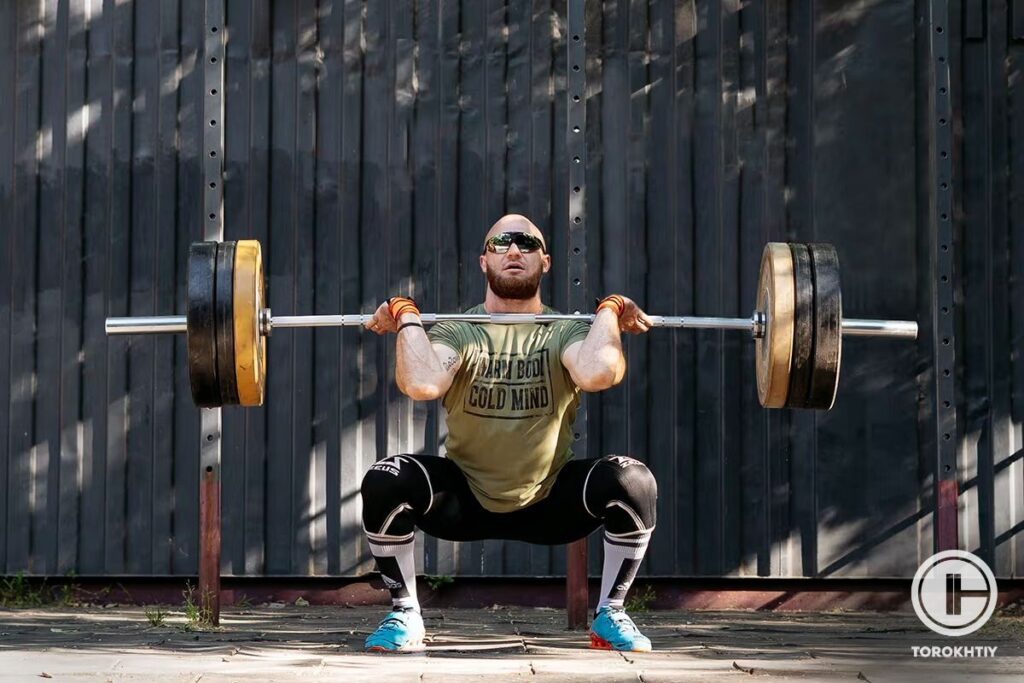
An increase in body temperature is of great importance. This promotes turning on all body blood system. In addition, an increase in temperature decreases the tightness of the muscles and increases their elasticity, which protects against injuries.
Need to take into account that the readiness of the body does not occur immediately after the warming up, but only at the 5-8th minute after its completion. Only after that you should take the barbell and begin to prepare for the exercises according to the training program. And there are problems with this too.
A lot of weightlifters do not know that even in a warm-up with a empty bar, it is necessary to break the exercise into small lead-in parts and work this way for several approaches, and only then proceed with the exercise as a whole. Further, the weight of the increase on the bar can vary between 5-20 kg, depending on the level of skill.
3. Failure To Set Goals
One of the biggest setbacks for weightlifters is the inability to set adequate goals. Just like achieving goals in any other area of your life, setting weightlifting goals will give you a more efficient path.
Don’t be afraid to set multiple goals at once! However, goal setting alone is not enough. You need to track and trace your progress to see how far you have come. This will give you more motivation to follow the right path.
4. An Attempt To Copy The Technique Of Top Athletes
You can often hear from novice athletes: I saw on the video how that world champion performed the exercise in this way and it means so correctly. Well, firstly, a guy that has been training for 10 weeks cannot compare himself with a weightlifter who has been in business over 10 years: the technique of a beginner and the technique of a professional have different level.
Secondly, the world’s TOP athletes are often unique people who have their own unique body structure and movement techniques that an ordinary person does not have. Of course, it is possible and necessary to follow and learn from unique athletes, but you cannot blindly copy the technique.
Imitation of anyone does not give development to an athlete: for the growth of sportsmanship, it is necessary to hear your body, understand the patterns and rules for performing movements – first simple, and then complex. And for this you need to study and work on yourself!
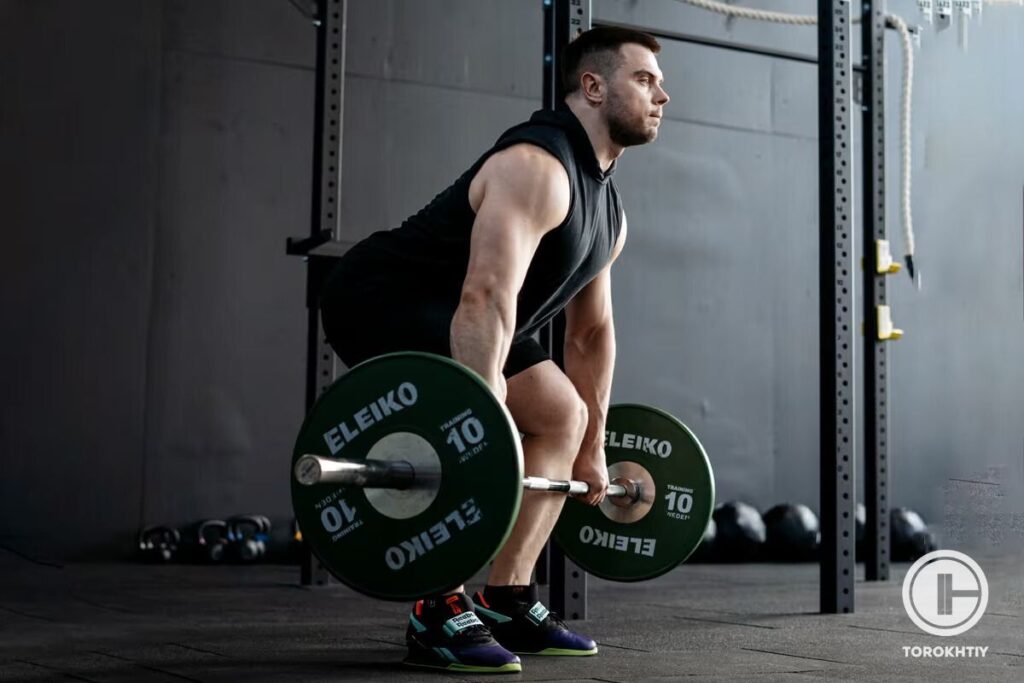
5. Failure To Communicate
It is important to engage with the weightlifting community, both in person and online! While you can probably embark on this journey alone without seeking advice or a partner, you most certainly won’t be able to reach your full potential along the way.
Knowing that you have a community to turn to for advice is great in many ways. You can get new workout ideas and find someone to help hold you accountable, which is priceless. It’s also much safer to have someone around when you’re working, especially if you’re new.
6. Don’t Listen To Your Body
All exercises involve overcoming a certain amount of discomfort. That being said, it’s important to listen to your body when it comes to pain during and after lifting weights.
Don’t ignore the signals from your body! If you find yourself in a lot more pain than you’re used to, or it takes a long time to recover from a certain exercise, you should think about it. Are you doing the exercise correctly? Are you too busy? Maybe it’s time to scale it down a bit. Many young weightlifters hope that if they will constantly push themselves to the edge of their capabilities, they will achieve high results.
In practice, such athletes usually get overtraining syndrome, and then they can get injured, which, unfortunately, is sometimes incompatible with continued training. It must be remembered that it is impossible to be strong and always be in peak shape – this is a temporary condition.
Professional athletes get in shape for about three, and sometimes more, months and prepare themselves for the peak of shape, but still, after the competition, they deliberately “lower” this shape in order to recover. The growth of the result does not occur in a vertical direction only, but in waves. For this, training programs are built, in which all these parameters are set.
7. Failure To Strike A Balance
Are you focused on one aspect of your workout, like strength? That’s good, but you need to make sure you’re making progress everywhere. Your goal is a balanced workout. Have you ever heard of the workout pattern? This is a pre-planned load that is well balanced.
For example, it can be a weightlifting program pdf. This is a tool that is extremely useful for those who are not sure what to do next. With the plan in front of you, it’s much easier, especially for beginners.
Whether you’re reaching a plateau in your goals or just looking to improve your training process, eliminating these common weightlifting mistakes is a great idea. When you recognize the easiest mistakes, you’ll be better equipped to take the right steps towards achieving your unique fitness goals, whatever they may be.
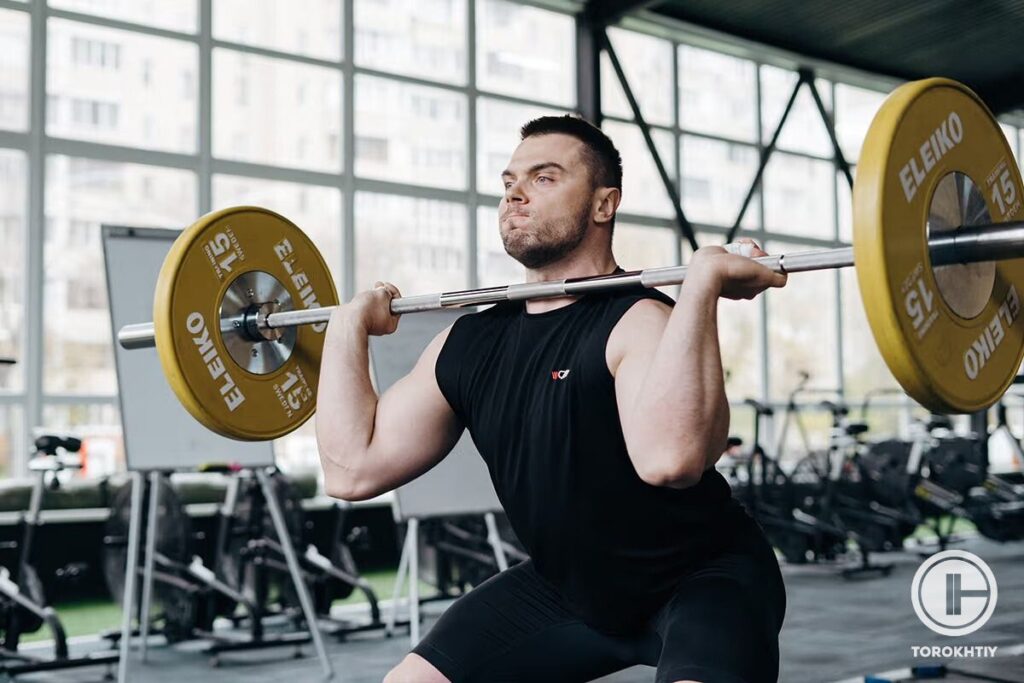
Olympic Lifting Programs
1. 3-Day Olympic Lifting Program
In most cases it is a concise Olympic weightlifting program for athletes with limited time, focusing on key lifts (Snatch, C&J, Pulls, Squats) and accessory work to maximize efficiency and progress. Also this type of programming works perfectly for people who use Oly lifting as an additional load to their main activity (MMA, functional fitness or specific sport).
Let’s take a look on one week example for 3 day training program:
Day 1:
- Specific warm up – 2 rounds
- SUPERMAN – 15 reps
- ABS – 20 reps
- Muscle SNATCH – 3 sets / 6 reps, light weight
- Power SNATCH – up to 70 %, 4 sets / 3 reps
- Snatch DEADLIFT – up to 85 %, 3 sets / 5 reps
- Back SQUAT – up to 80 % 4 sets / 4 reps
- Some light accessory and core exercises
Day 2:
- Specific warm up – 2 rounds
- HYPEREXTENSION – 10 reps
- Gakk SQUAT – 8 reps
- THRUSTER – 3 sets / 6 reps, light weight
- Power CLEAN – up to 70 %, 3 sets / 3 reps
- Good Morning – 3 sets / 8 reps, medium weight
- Lat PULL – 3 sets / 12 reps, medium weight
- Some light accessory and core exercises
Day 3:
- Specific warm up – 2 rounds
- SUPERMAN – 15 reps
- ABS – 20 reps
- Muscle Squat SNATCH & Overhead SQUAT – 3 sets / 4+4 reps, light weight
- Deficit DEADLIFT & SHRUGS – 3 sets / 6+6 reps, medium weight
- Front SQUAT – up to 90 %, 4 sets / 4 reps
- Bench PRESS – 4 sets / 8 reps, medium weight
A good example of this program can be our BEGINNER PROGRAM.
🔻Olympic Weightlifting Program For Beginners
🏋️ Get Started Right with Our Beginner’s Program!
Are you new to weightlifting and looking for the perfect program to kickstart your journey? Look no further! Join Olympian, World, and European Champion Oleksiy Torokhtiy 🇺🇦 in the Beginner’s program.
Key Benefits:
- 💪 Build Strength and Technique
- 🏅 Expert Coaching by Olympian Alex Torokhtiy
- 🏋️ Focus on Snatch and Clean & Jerk
- ⏰ 3 Weekly Sessions (50-80 mins each)
- 📽 Clear Video Instructions
- 💯 100% Money-Back Guarantee
- 🔥 Break Personal Records
- 🤝 Perfect for Beginners
Say goodbye to the common struggles that beginner weightlifters face and embrace the guidance and expertise of an Olympic champion.
2. 4-Day Olympic Lifting Program
It is an optimal comprehensive program that allows for more load and recovery. Ideal for intermediate competitive and recreational lifters looking to improve strength and technique.
Here is an example template for 4 day training program:
Day 1:
- Specific warm up – 3 rounds
- Hyperextension – 10 reps
- ABS – 15 reps
- Gakk squat – 10 reps
- SNATCH & Overhead SQUAT – up to 60 %, 4 sets / 3+3 reps
- Back SQUAT – up to 60 %, 4 sets / 8 reps
- Deficit Romanian DEADLIFT – 3 sets / 12 reps, medium weight
- Box JUMP – 4 sets / 8 reps
Day 2:
- Specific warm up – 3 rounds
- Hyperextension – 10 reps
- Gakk squat – 10 reps
- CLEAN + Front SQUAT + JERK – up to 70 %, 4 sets / 2+2+2 reps
- Front SQUAT – up to 70 %, 4 sets / 4 reps
- Split SQUAT – 3 sets / 8+8 reps, medium weight
- Depth JUMP – 4 sets / 6 reps
Day 3:
- Specific warm up – 3 rounds
- Hyperextension – 10 reps
- ABS – 15 reps
- Gakk squat – 10 reps
- SNATCH – up to 60 %, 5 sets / 2 reps
- Snatch PULL – up to 85 %, 4 sets / 4 reps
- Back SQUAT feet narrow – up to 60 %, 4 sets / 8 reps
- Barbell Squat JUMP – 5 reps / 6 sets
Day 4:
- Specific warm up – 3 rounds
- Reverse Hyperextension – 10 reps
- ABS – 15 reps
- Box JUMP – 10 reps
- CLEAN & JERK – up to 60 %, 5 sets / 2+2 reps
- GOOD MORNING – 3 sets / 8 reps, medium weight
Relevant example of 4 day cycle is our specialized LEG STRENGTH training program
3. 5-Day Olympic Lifting Program
An advanced (semi-pro/pro level) 12 week program with higher volume and intensity, designed for experienced and well trained lifters aiming for maximal strength and performance improvements.
This how 5 day week sample can be built:
Day 1:
- Specific warm up – 2 rounds
- HYPEREXTENSION – 12 reps
- PVC Overhead Duck Walk – 10 steps
- PVC Muscle SNATCH + Sn BALANCE – 3 sets × 6+6 reps
- Hang SNATCH above knee + below – up to 70 %, 4 sets / 2+1 reps
- Snatch Hang PULL above knee – up to 80 %, 3 sets / 4 reps
- Back SQUAT – up to 60 %, 4 sets / 6 reps
- Snatch PRESS – 3 sets×8 reps, light weight
Day 2:
- Specific warm up – 2 rounds
- SUPERMAN – 12 reps
- ABS – 15 reps
- Muscle SNATCH+OHS – 3 sets / 4+2 reps, light weight
- PUSH PRESS – up to 50 %, 4 sets / 4 reps
- Good Morning + SQUAT – 3 sets / 8 reps, light weight
- Squat JUMP – 3 sets / 5 reps
Day 3:
- Specific warm up – 2 rounds
- HYPEREXTENSION – 12 reps
- BW Split Squat – 5+5
- CLEAN from blocks below knee – up to 70 %, 3 sets / 2 reps
- Clean PULL from blocks – up to 90 %, 3 sets / 3 reps
- Front SQUAT + JERK – up to 70 %, 3 sets / 1+2 reps
- Glute BRIDGE – 2 sets / 20 reps
- CALF RAISE – 2 sets / 20 reps
Day 4:
- Specific warm up – 2 rounds
- HYPEREXTENSION – 12 reps
- BOX JUMP – 6 reps
- PVC SNATCH (onto the plates) – 3 sets / 6 reps
- Power SNATCH + Overhead SQUAT – up to 70 %, 3 sets / 1+1 reps
- Medium grip PULL – up to 80 %, 4 sets / 4 reps
- Back SQUAT feet narrow – up to 60 %, 4 sets / 4 reps
- Snatch PUSH PRESS – up to 60 %, 3 sets / 3 reps
- Wrists Flexion – 2 sets / 20 reps, light weight
Day 5:
- Specific warm up – 2 rounds
- SUPERMAN – 12 reps
- ABS – 15 reps
- Elbows rotation – 8 reps
- Power CLEAN + Power CLEAN below knee – up to 70 %, 5 sets / 1+1 reps
- Deficit Clean PULL – up to 80 %, 3 sets / 4 reps
- Military PLANK – 3 sets / 30 sec
- Barbell Squat JUMP – 3 sets / 6 reps
Find full 12 week training template in MALE 2.0 competition program:
🔻12-Week Olympic Weightlifting Program by Oleksiy Torokhtiy
Transform your strength and technique with our 12-week Olympic Lifting Program, made up of 5 sessions per week.
It is designed by Olympic Champion for athletes who are looking to set new personal records safely in Snatch or Clean & Jerk.
Program details:
- 12 weeks + 2 bonus weeks
- 45-120 minutes per session
- 50+ specific exercises/98 video instructions
- Primary focus on Olympics Lifts
- Full access to all training content
- Weekly video coach instructions
Start now and boost your weightlifting results!
4. Masters Olympic Lifting Program
This competition program is usually tailored for athletes 35+, focusing on power, mobility, strength and technique, while considering age related to limitation and recovery needs.
A weightlifting regimen for Master athletes is a carefully selected mix of exercises that are both effective and have a lower risk of injury. The program alternates between different types of loads and includes strength exercises with a limited range of motion to ensure the training stress is optimal.
Training week template:
Day 1:
- Specific warm up – 2 rounds
- HYPEREXTENSION – 12 reps
- ABS – 15 reps
- Duck Walk – 10 steps
- Muscle SNATCH – 3 sets / 6 reps, light weight
- Power SNATCH – up to 70 %, 3 sets / 2 reps
- Snatch DEADLIFT – up to 90 %, 3 sets / 3 reps
Day 2:
- Specific warm up – 2 rounds
- SUPERMAN – 15 reps
- Gakk SQUAT – 6 reps
- Wall SQUAT – 6 reps
- Front SQUAT+JERK – up to 70 %, 3 sets / 1+2 reps
- Push PRESS – up to 50 %, 3 sets / 4 reps
- Split SQUAT – 3 sets / 6+6 reps, light weight
Day 3:
- Specific warm up – 2 rounds
- HYPEREXTENSION – 12 reps
- ABS – 15 reps
- Front SQUAT with straps – 6 reps
- Clean PULL (till power position) + CLEAN – up to 60 %, 3 sets / 2+2 reps
- Hang CLEAN (below the knee) – up to 70 %, 3 sets / 2 reps
- Clean PULL from blocks – up to 90 %, 3 sets / 4 reps
Day 4:
- Specific warm up – 2 rounds
- SUPERMAN – 15 reps
- Duck Walk – 10 steps
- SNATCH – up to 50 %, 4 sets / 4 reps
- Good Morning – 3 sets / 6 reps, light weight
Find full competition preparation for athletes 35+ in Master Diesel training
🔻Masters Weightlifting Program
Unlock Your Full Potential with the MASTER DIESEL Program!
Are you a dedicated master athlete looking to reach new heights in Olympic weightlifting? Oleksiy Torokhtiy’s Master Diesel Program is your ticket to success
🔥 What Makes MASTER DIESEL Special? 🔥
- 👉 9-week Olympic weightlifting program tailored for masters.
- 👉 4 effective sessions weekly.
- 👉 Competition week for peak performance.
- 👉 Injury prevention through flexibility training.
- 👉 Strength-focused exercises.
Program Features:
- ✔️ For all athletes.
- ✔️ Clear demonstrations.
- ✔️ Unique periodization.
- ✔️ Lifetime access.
👴 Age is just a number – Master Your Olympic Weightlifting Journey with MASTER DIESEL! 💪💥
5. Intenso Cycle Olympic Lifting Program
This is a 8-week competition program, based on fast and intensive preparation with a lot of heavy Snatch and C&J singles, waves lifting. Main goal is to push athletes to their limits.
Check the basic training week template:
Day 1:
- Specific warm up – 3 rounds
- Bird Dog – 10+10 reps
- Split squat – 6+6 reps
- Elbows rotation – 10 reps
- Thruster – 3 sets / 6 reps, light weight
- CLEAN & JERK – 3 waves up to 85 % 1+1
- Clean PULL slowly down – up to 100 %, 4 sets / 2 reps
- Military PRESS – 4 sets / 8 reps
- Wrists Flexion – 4 sets / 15 reps
Day 2:
- Specific warm up – 3 rounds
- SUPERMAN – 15 reps
- Iron butterfly – 20 reps
- Good Morning – 3 sets / 8 reps, medium weight
- Snatch PUSH PRESS + Snatch BALANCE – up to 60 %, 3 sets / 2+2 reps
- Pause SNATCH (knee level) – up to 80 %, 3 sets / 2 reps
- Pause Back SQUAT – up to 70 %, 4 sets / 3 reps
Day 3:
- Specific warm up – 3 rounds
- HYPEREXTENSION – 15 reps
- ABS – 20 reps
- Clean PULL + Muscle Squat CLEAN – 3 sets / 3+3 reps, light weight
- CLEAN & JERK – up to 50 %, 6 sets / 2+2 reps
- Romanian DEADLIFT – 3 sets / 8 reps, medium weight
- Wall sit – 4 sets / 30 sec
- BOX JUMP – 4 sets / 8 reps
Day 4:
- Specific warm up – 3 rounds
- Bird Dog – 10+10 reps
- ABS – 20 reps
- Good Morning – 3 sets / 8 reps, medium weight
- SNATCH – 3 waves up to 85 % 1+1
- Snatch PULL – up to 90 % 4 sets / 2 reps
- Snatch Sots PRESS – 4 sets / 8 reps, medium weight
Day 5:
- Specific warm up – 3 rounds
- SUPERMAN Swim – 15 reps
- Gakk SQUAT – 12 reps
- Elbows stretching – 6 reps
- Good Morning – 3 sets / 8 reps, medium weight
- Power CLEAN – up to 70 % 3 sets / 2 reps
- Back SQUAT+ Front SQUAT – up to 90 % 3 sets / 2+2 reps
- Jerk SUPPORT – up to 105 % 3 sets / 1 reps
- BOX JUMP – 3 sets / 6 reps
Find more details about INTENSO CYCLE
6. Olympic Lifting Program For Women
A competition 12 week Olympic weightlifting program specifically designed for women, taking into consideration physiological differences to optimize strength gains, technique.
Let’s take a deeper look on 5 day week example:
Day 1:
- Specific warm up – 2 rounds
- HYPEREXTENSION – 12 reps
- PVC Overhead Duck Walk – 10 steps
- PVC Muscle SNATCH + Sn BALANCE – 3 sets / 6+6 reps
- Hang SNATCH above knee + below knee – up to 65-70 % 6 sets / 2+1 reps
- Snatch PULL+ Snatch PULL below knees – up to 80 % 5 sets / 1+3 reps
- Back SQUAT – up to 60 % 4 sets / 5 reps
- Snatch Sots PRESS – 4 sets / 12 reps, light weight
Day 2:
- Specific warm up – 2 rounds
- SUPERMAN – 12 reps
- ABS – 15 reps
- Clean PULL + Muscle Squat CLEAN – 3 sets × 3+3 reps, light weight
- CLEAN from blocks + Front SQUAT – up to 70 % 3 sets / 2+1 reps
- Clean PULL from blocks – up to 90 % 3 sets / 3 reps
- Biceps CURLS reverse grip – 2 sets / 12 reps
- Wrists Flexion – 2 sets / 20 reps
Day 3:
- Specific warm up – 2 rounds
- HYPEREXTENSION – 12 reps
- BW Split Squat – 5+5
- Muscle SNATCH + Overhead SQUAT – 3 sets / 3+3 reps, light weight
- Front SQUAT+JERK – up to 70 % 3 sets / 1+2 reps
- Push PRESS – up to 50 % 4 sets /3 reps
Day 4:
- Specific warm up – 2 rounds
- HYPEREXTENSION – 12 reps
- BOX JUMP – 6 reps
- Power CLEAN + Hang Power CLEAN – up to 70 % 5 sets / 1+1 reps
- Deficit Clean PULL – up to 90 % 3 sets / 3 reps
- Front SQUAT – up to 85 % 4 sets / 3 reps
- Military PRESS – 4 sets / 8 reps
- Military PLANK – 3 sets / 30 sec
Day 5:
- Specific warm up – 2 rounds
- SUPERMAN – 12 reps
- ABS – 15 reps
- PVC SNATCH onto the plates – 3 sets / 6 reps
- Power SNATCH + Overhead SQUAT – up to 70 % 4 sets / 1+1 reps
- Medium grip PULL – up to 80 % 4 sets / 4 reps
- Back SQUAT – up to 60 % 4 sets / 4 reps
- Glute BRIDGE – 2 sets / 20 reps
- CALF RAISE – 2 sets / 20 reps
Find more details about Women Olympic weightlifting competition preparation here:
🔻Weightlifting Program for Women (12 Week)
Transform your strength with our 12-week Olympic Weightlifting Program for Women, designed by Olympian, World, and European Champion Oleksiy Torokhtiy.
Three focused periods, from general preparation to peak performance, ensure you’re equipped for success.
Program details:
- 12 weeks + 2 bonus weeks;
- 5 days / week;
- 45-120 minutes per session;
- 50+ specific exercises;
- Primary focus on Olympics Lifts;
- Full access to all training content.
Start now and boost your weightlifting results!
7. Weightlifting For Functional Fitness
This is a 10 week competition weightlifting cycle meticulously crafted for athletes aiming to blend weightlifting and functional fitness training. The primary objective is to achieve new PR in the snatch and C&J. This program can be self-contained or can be seamlessly integrated into existing functional training schedules.
Week cycle routine example:
Day 1:
- Specific warm up – 2 rounds
- HYPEREXTENSION – 15 reps
- Gakk SQUAT – 12 reps
- Clean PULL + CLEAN – 3-4×2+2 70-75% of max C&J
- Front SQUAT – 3×5 @ 85-90% of max C&J
- Barbell Squat JUMP – 3×8
Day 2:
- Specific warm up – 2 rounds
- SUPERMAN – 15 reps
- Gakk SQUAT – 12 reps
- Push PRESS – 3-4×6 MEDIUM
- Back SQUAT – 3-4×4 @ 60% of max Back SQUAT
- Military PRESS – 3 sets×8 MEDIUM
Day 3:
- Specific warm up – 2 rounds
- HYPEREXTENSION – 15 reps
- Duck Walk – 10 reps
- Power SNATCH + Snatch BALANCE – 3-5×2+2 @ 60-70% of max Snatch
- Snatch PULL – 3-4×4 @ 85-90% of max Snatch
- Snatch Sots PRESS – 3×10 MEDIUM
Full weightlifting training program for functional fitness athletes you will find here:
🔻Weightlifting For Functional Fitness Program
🏋️♂️ Join our 10-Week Program, the ultimate fusion of Olympic Weightlifting and Functional Fitness.
🔥Why Choose?🔥
- 🏋️♂️ Specialized for Functional Fitness
- 🏋️♂️ Stand-Alone or Bolt-On
- 🏋️♂️ Packed Sessions for Max Gains
- 🏋️♂️ 76 Exclusive Exercises
- 🏋️♂️ Golden Ticket For NEW results in Snatch and C&J.
What’s Included:
- ✅ 10 weeks of weightlifting programming.
- ✅ 15 Warm Up Drill protocols.
- ✅ 76 exercise/movement videos.
- ✅ 2 Bonus weeks focused on Competition and Maxout.
- ✅ Lifetime access to the program.
Ready to smash your goals? Join NOW!
FAQ
Should I Focus On Intensity Or Volume?
In fact, it depends on your specific goal. For muscle growth, higher volume is crucial. For increasing maximal strength and power, high intensity lifts are beneficial. Need to remember, that effective training program must include both, changing the focus between volume and intensity over different periods of training.
What Is The Difference Between Volume And Intensity For Growth?
Volume or intensity for muscle growth? Intensity and volume both contribute to muscle growth, but in different ways. Volume is a total measure of sets and reps and is generally associated with muscle growth as it increases time under tension and stimulates muscle fibers to grow. Intensity, defined as quality of training work and usually calculates in % from 1 RM, is key for strength gains. However, training at high intensity can also stimulate muscle hypertrophy, especially for more experienced athletes.
Conclusion
An effective weightlifting program should incorporate a variety of volume and intensity combinations to target all aspects of training. It must be done in a periodized manner, with different phases of training.
For example, a lifter might spend a few weeks focusing on volume to build muscles and improve technique. Then, leading up to competition, shift to a phase of high intensity to develop power and strength and after a tapering week to get in the best shape. Now it’s your turn to share your thoughts in the comment section below.
References:
- Ingo Sandau, Urs Granacher “Effects of the Barbell Load on the Acceleration Phase during the Snatch in Elite Olympic Weightlifting” Sports (Basel). 2020 May 8
- Paulo D G Santos, João R Vaz, Paulo F Correia, Maria J Valamatos, António P Veloso, Pedro Pezarat-Correia “Intermuscular Coordination in the Power Clean Exercise: Comparison between Olympic Weightlifters and Untrained Individuals-A Preliminary Study” Sensors (Basel). 2021 Mar 9
- Seiichiro Takei, Kuniaki Hirayama, Junichi Okada “Is the Optimal Load for Maximal Power Output During Hang Power Cleans Submaximal?” Int J Sports Physiol Perform. 2019 Sep 6
- Joaquim Paulo Antunes, Rafael Oliveira, Victor Machado Reis, Félix Romero, João Moutão, João Paulo Brito “Comparison between Olympic Weightlifting Lifts and Derivatives for External Load and Fatigue Monitoring” Healthcare (Basel). 2022 Dec 10
Also read:
Why Trust Us?
With over 20 years in Olympic Weightlifting, our team does its best to provide the audience with ultimate support and meet the needs and requirements of advanced athletes and professional lifters, as well as people who strive to open new opportunities and develop their physical capabilities with us.
By trusting the recommendations of our certified experts in coaching, nutrition, dietology, and sports training programming, as well as scientific consultants, and physiotherapists, we provide you with thorough, well-considered, and scientifically proven content. All the information given in the articles concerning workout programming, separate exercises, and athletic performance, in general, is based on verified data. We ensure that you can rely on our professionals’ pieces of advice and recommendations that can be treated as personalized ones which will benefit you and fully meet your needs.
The product testing process is described in more detail here
Author: Sergii Putsov
Head of Sport Science, PhD
Best Results: Snatch – 165 kg,
C&J – 200 kg
Sergii Putsov, Ph.D., is a former professional weightlifter and National team member, achieving multiple medals in the 94 kg weight category at national competitions. With a Master’s degree in “Olympic & Professional Sport Training” and a Sport Science Ph.D. from the International Olympic Academy, Greece, Sergii now leads as the Head of Sport Science. He specializes in designing training programs, writing insightful blog articles, providing live commentary at international weightlifting events, and conducting educational seminars worldwide alongside Olympic weightlifting expert Oleksiy Torokhtiy.
Reviewed by: Oleksiy Torokhtiy
Olympic Weightlifting Champion
Best Results: Snatch – 200 kg,
C&J – 240 kg
Oleksiy Torokhtiy is a professional athlete boasting 20 years of experience in Olympic weightlifting. With multiple European and World titles under his belt, he has showcased his prowess in two Olympic Games (Beijing 2008 and London 2012). Upon concluding his illustrious career, Oleksiy dedicated himself to coaching. By 2022, he had conducted over 200 weightlifting seminars worldwide. He is the visionary behind an international sportswear and accessories brand known for its motto, “Warm Body Cold Mind.” Additionally, he is an esteemed author and the creator of a series of training programs and eBooks.

